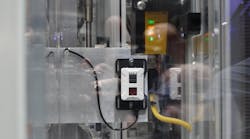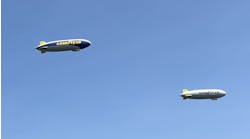Strategic Retrofitting: Older Machines Get an IIoT Update
There’s an understandable reluctance to investigate the Internet of Things among companies that have millions invested in legacy heavy manufacturing equipment. Even if many of those devices are 20-25 years or more old, they may still be running well. Companies may fear they’ll have to scrap that investment, retrain staff, or disturb or replace other assembly-line equipment that’s linked to it, disrupting production.
Add-on retrofit sensors that only cost hundreds of dollars are an affordable alternative that can allow these companies to access the IIoT at moderate cost. They can keep the current machinery while increasing operating efficiency and profitability.
A new IoT-based ability to gather in real-time and act on operating data is a break from the past, where machines are only monitored by manual vacuum gauges that have to be visually monitored or whose status is simply a mystery.
Strategic retrofitting should begin with a careful analysis of the relative business benefits of potential add-ons on various steps in the production process. The obvious first step is to calculate the operational improvements and/or cost savings and customer benefits the expense will produce.
One particularly promising area for retrofits is those operations where a serious, costly breakdown can result from equipment failures that couldn’t be predicted in the past because the operations were impossible to monitor on a real-time basis. Bosch’s Stuttgart Feurbach facility in Germany added a prototyping kit billed as “the Swiss Army Knife” for the IOT” to collect previously unreported data on factors including temperature, vibration, and pneumatic pressure, via sensors throughout the production line. The data goes to the plant’s existing Manufacturing Execution System. As a result, Stuttgart Feuerbach’s IoT system can now reduce downtime and maintenance costs and increase operating efficiency by monitoring and visualizing emerging conditions. It can also perform predictive maintenance when it is convenient for production schedules.
Ih London, add-on solar-powered wireless real-time CO2 monitors cut air handling and energy consumption (based on changes in demand) by 42% in several high-end commercial buildings. The technology also gives facility management teams full, 24/7 visibility of workspace conditions.
As for specific types of retrofit IoT devices, perhaps the best starting point is adding a gateway. VDC Research’s Director of Industry Analysis, IoT, and Embedded Technology Steve Hoffenberg said: "Intelligent gateways are increasingly being used as a way to try to bridge legacy systems into more modern Internet-connected systems. … They can also monitor those communications for security-related anomalies or various kinds of known or unknown malware that might be trying to make incursions into the system.”
Measuring key data with retrofit IoT devices can be as simple as training a camera on an existing analog mechanical gauge so the readings can be transformed into digital form —or even just pointing the camera at products coming off an assembly line. According to Richard Phillips,, who directs system integrator Polytron’s smart manufacturing and digital transformation group, there’s a bottling plant whose managers couldn’t understand why a filling line’s output was reduced:
“Smart photoelectric sensors could be placed at various points along the line—one to count bottles going into the filler, another to count bottles coming out of the filler, and a third to tally cases at the end of line,” he said in the report. “Data streaming off the sensors could identify which process is slowing down the line or throwing errors. That gives them enough information to know where their losses are.”
The wide range of retrofit devices include:
- Optical sensors trained on status lights to report changes
- Audio sensors reporting legacy warning devices or out-of-the-ordinary sounds.
- Plug-in electricity monitors (they’re inserted in the socket and the cord is plugged into them) similar to the ones used by some homeowners, reporting fluctuating demand that can indicate the motor is stressed or shut down.
- Vibration sensors to report increased wear and predict failure.
- Remote valve monitors, which detect hand-operated valves’ positions and report them to the central control system. Benefits can include a 90% reduction in monitoring costs, such as quicker process recovery after maintenance shutdowns, increased safety and new analytics.
If you need inspiration, perhaps the most extreme example of bringing existing manufacturing equipment into the IoT age was when Bosch Rexroth connected a lathe installed in 1887 to a sensor tracking its speed. The data was forwarded to a computer that created a graph of the lathe’s speed. You couldn’t remotely control the lathe, but according to a report by Paessler, “you can easily imagine a similar type of lathe with its existing gearing being connected to a modern motor and controlled by a remote console.”
Given that example, what’s your excuse for not exploring an IoT retrofit for your existing production line?
W. David Stephenson, principal of Stephenson Strategies (Millis, Massachusetts), is an IoT consultant and thought leader. His The Future Is Smart (HarperCollins Leadership), is one of the first books on IoT strategy.




